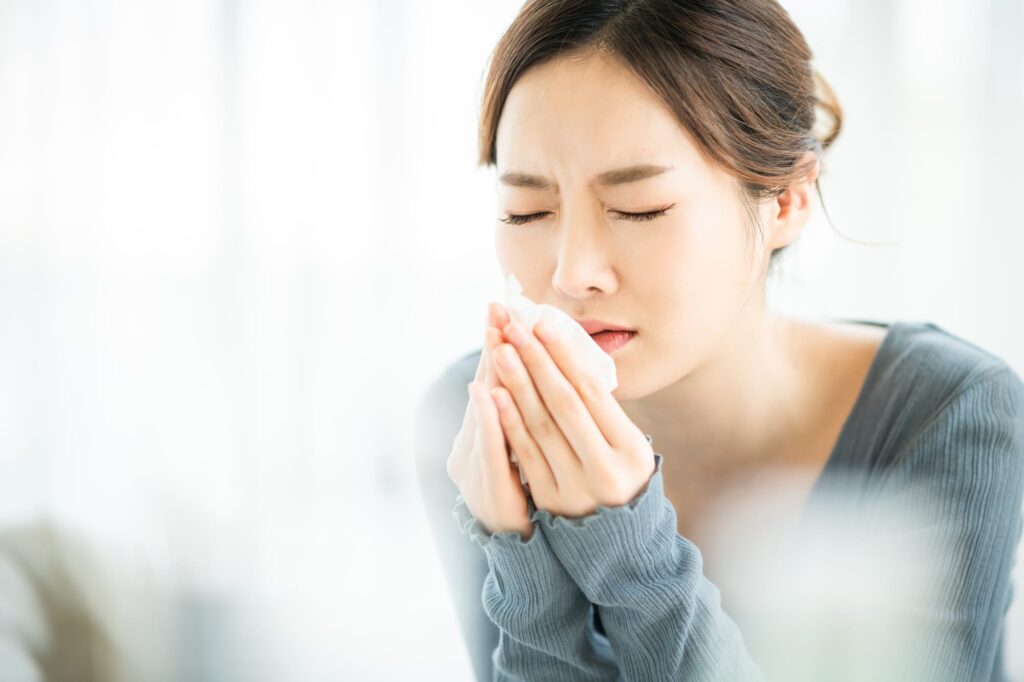[ad_1]
Spending your spring in Japan next year? Be prepared for having a runny nose and itchy eyes. Forecasts say more hay fever-inducing pollen will be in the air in most regions. Read here to learn where the danger zones are, how to avoid getting sick, and where you can get away from hay fever.
Kafunsho Increases of Over 100%
On September 28th, the Japan Weather Association, or Nihon Kishō Kyōkai (日本気象協会), released its first forecast for this coming spring’s pollen count.
In contrast to 2023, Tohoku and Hokkaido regions can expect more pollen in the upcoming spring while areas below will likely have similar levels of pollen, according to the latest report.
Hokkaido’s pollen count will be a whopping 630% higher than the previous year for white birch pollen.
Luckily, most people are not allergic to white birch pollen. The most common cause of hay fever is pollen from cedar and cypress, which are the types found dominantly in regions outside of Hokkaido.
For the Tohoku region, the pollen count for cedar and cypress pollen will rise 180%. For the rest of Japan spanning from Kantō to the Southernmost Kyushū regions, there will be less pollen compared to 2023.
However, the study reveals that a long-term comparison of pollen count over the past decade suggests an increase in every region in 2024.
Advertisements
The pollen count in all regions of Japan this coming spring will be higher than the past ten year’s average.
Hokkaido will see the biggest jump–––a 230% increase. Major destinations for inbound and domestic tourism like Kanto and Kinki regions will have 150% and 160% more pollen, respectively.
Extreme heat leads to more pollen
The cause of this coming spring’s widespread increase in pollen count is due to the extreme heat Japan experienced this summer, which resulted in a tragic increase in heatstroke deaths.
An area’s pollen count depends a lot on the previous summer’s weather patterns. The hotter and the drier the previous summer was, the higher the pollen count will be.
This summer was the hottest in Japanese history since records began in 1898, according to the Japan Meteorological Agency, or Kishochō (気象庁). This summer’s average temperature was +1.76 degrees Celsius higher than any previous year on record. On one occasion, the temperature did not fall below 31.4 degrees Celsius in Niigata Prefecture’s Itoigawa City, marking the hottest night ever in Japan.

Companies and Consumers Weigh In
Hay fever patients in Japan increased by over twofold in approximately two decades, according to a study by the Ministry of Environment, or Kankyoshō (環境省) in 2019.
Some companies have taken measures to ensure that the growing threat of hay fever does not interfere with employees’ productivity.
Japanese tech company LAFOOL offers a benefits package for hay fever to its employees to cover their medical fees. The company compensates up to 5,000 yen for every doctor visit and prescription.
Transport company Hokuō Ryutsū (北王流通) distributes hay fever medicine for free to its employees.
Individual consumers are taking matters into their own hands too.
Mask sales in February of 2023 increased by over 80% compared to the previous year, according to Japanese Market research company intage.
Loft reported that anti-hay fever products sold twice as much as the previous year in spring of 2023.
Sales of medicine to treat nasal congestion and allergies also went up by 40% and 50% respectively, according to a study by intage.
How to stay safe
The first piece of advice for avoiding or alleviating hay fever symptoms is to put on masks and special eyewear.
To prevent pollen from entering the eyes, Japanese nationals stock up on goggles and glasses with protective hoods.
Wearing less wool, which pollen easily attaches to, can also help.
The last resort is to take a vacation to parts of Japan where cedar and cypress trees don’t exist.
The top hay fever getaway spots are Okinawa and Hokkaido.
For those living in hay fever hot spots with a budget, going to Kusatsu Osen in Gunma or Hachijō Island in Tokyo can be an alternative.
Kusatsu Onsen sits at an altitude high enough that cedar and cypress trees cannot survive in the area.
Hachijō Island is known as the topical closest to Tokyo. Its biome is not one where cedars and cypress trees thrive.
Sadly, vacations aren’t always an option. If you’re a Japan-based kafunsho sufferer, prepare for a potentially rough hay fever season.
[ad_2]
Source link



